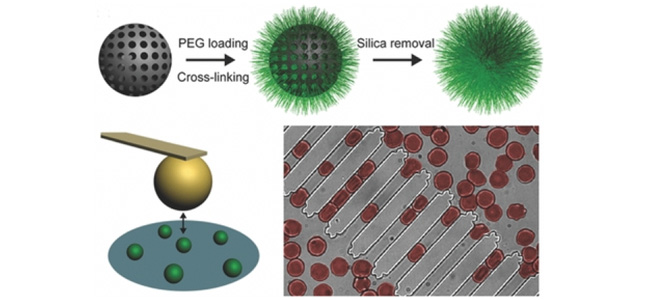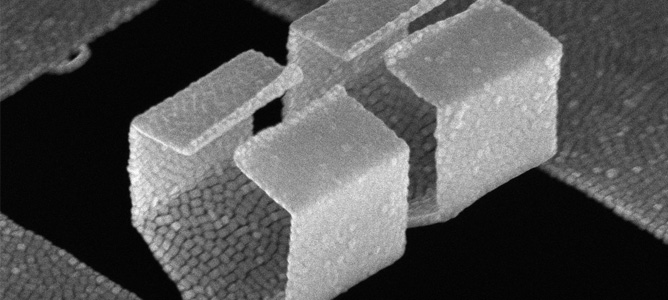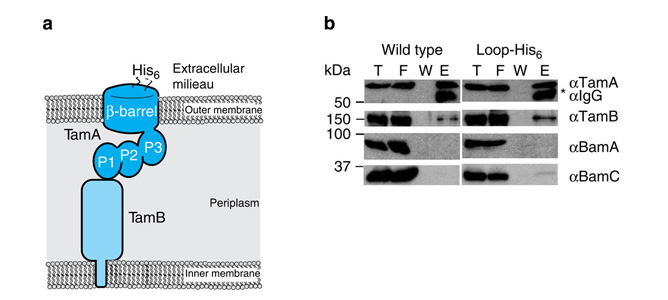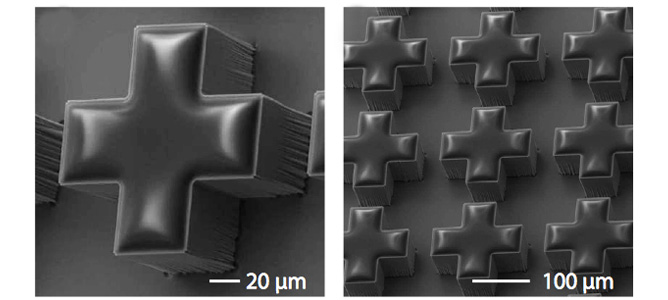Noteworthy publications




Congratulations to Jiwei Cui et al from the University of Melbourne and the Laboratory for Mechanics of Materials and Nanostructureswho recently published “Super soft hydrogel particles with tunable elasticity in a microfluidic blood capillary model” in Advanced Materials. The paper explores super-soft PEG hydrogel particles with tunable elasticity which are prepared via a mesoporous silica templating method. The deformability behavior of these particles, in a microfluidic blood capillary model, can be tailored to be similar to that of human red blood cells. These results provide a new platform for the design and development of soft hydrogel particles for investigating bio-nano interactions. (see figure 1)
Congratulations to MCN Staff Member, Fatima Eftekhari and Technology Fellows Wenlong Cheng and Qiaoliang Bao from Monash University who recently published “Giant Plasmene Nanosheets, Nanoribbons, and Origami" in ACS Nano. The paper introduces Plasmene— in analogy to graphene—as free-standing, one-particle-thick, superlattice sheets of nanoparticles from the “plasmonic periodic table.” The team report on a general bottom-up self-assembly approach to fabricate giant plasmene nanosheets as thin as ∼40 nm and as wide as ∼3 mm. In conjunction with top–down lithography, such robust giant nanosheets could be milled into one-dimensional nanoribbons and folded into three-dimensional origami. (see figure 2)
Congratulations to Hsin-Hui Shen et al from Monash University, ANSTO and NIDDk, who recently published “Reconstitution of a nanomachine driving the assembly of proteins into bacterial outer membranes” in Nature Communications. The paper looks at various protein secretion devices of biological membranes which function as nanomachines. The translocation and assembly module (TAM) is a nanomachine required for virulence of bacterial pathogens. The group reconstituted a membrane containing the TAM onto a gold surface for characterization by quartz crystal microbalance with dissipation and magnetic contrast neutron reflectrometry (MCNR). This enabled accurate measurement of protein domains projecting from the membrane layer. The reconstituted system provides a powerful new means to study molecular movements in biological membranes, and the technology is widely applicable to studying the dynamics of diverse cellular nano machines. (see figure 3)
Congratulations to Yong Zhi Cheng et al from University of Adelaide, RMIT University and Huazong University who recently published "Ultrabroadband Plasmonic Absorber for Terahertz Waves" in Advanced Optical Materials. The paper looks at terahertz plasmonics which are used to demonstrate near-unity absorption across a broad spectral range. The absorber comprises a planar array of cross-shaped structures defined by surface etching of doped silicon. Absorbance of over 90% is observed numerically with a relative bandwidth of 90% from 0.67 to 1.78 THz, in reasonable agreement with experimental observation. This ultrabroadband absorption is attributed to two resonance modes supported by plasmonic cavities that are defined by the etched cross structure. This terahertz absorber is single-layered, polarization-insensitive, and exhibits consistent performance across a wide range of incidence angles. The plasmonic-based approach for enhancing absorption is a potential precursor to the realization of efficient bolometric imaging and communications at terahertz frequencies. (see figure 4)


